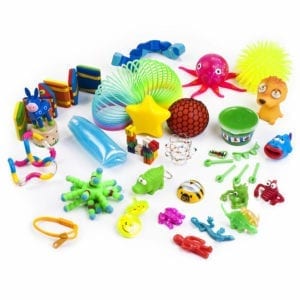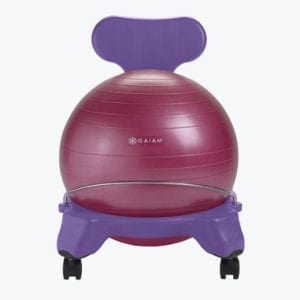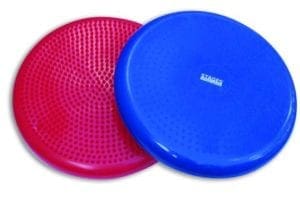Does your child seem more active than their same-aged peers or pursue movement? Does your child have a hard time sitting in their chair at school or during meal time? Is your child fidgety? If you answered yes to these questions, then read on to learn more about possible reasons why your child is having a hard time sitting still and occupational therapy strategies that can help your child!
Possible Reasons That Kids Can’t Sit Still
There are many factors that contribute to a child having trouble sitting still. One reason is Attention Deficit and Hyperactivity Disorder (ADHD). With the number of children being diagnosed with ADHD increasing, it is not uncommon for children nowadays to have trouble sitting still. If your child has ADHD, they may seem restless, constantly active, and have limited attention.
Your child may also be experiencing difficulties sitting still if they have sensory processing issues. These sensory issues might occur in children with autism spectrum disorder (ASD) or sensory processing disorder (SPD). Children may be a sensory seeker and have difficulty with self-regulation impacting their ability to sit still.
Other factors that might contribute to high energy levels and difficulty with sitting still are diet or sleep cycles. If a child is eating a diet that is rich in processed foods and sugar, they may experience behavioral issues as a result. Children who are hungry may also have difficulty focusing due to being preoccupied with their hunger. When children are not sleeping through the night, they may be arriving at school sleep deprived, which can also lead to trouble focusing and sitting still during the day.
How Occupational Therapy Can Help
Pediatric occupational therapists work with children to build the skills needed to complete daily activities at home and at school. A child’s inability to sit still can impact their attention, regulation, and ability to learn. An occupational therapist can work with your child and provide strategies that can be used both at home and at school to improve your child’s ability to sit still and attend.
OT Strategies That Can Help Children Who Can’t Sit Still
Using a fidget: Sometimes giving the child a fidget toy to hold during class will keep their hands busy and help them to stay engaged and sit still.

© The Therapy Store 2015
(Source: http://www.thetherapystore.com.au/product/fidget-toy-kit/)
Taking movement breaks: It might be helpful for children to periodically get out of their seats to take a movement break. They can get a drink of water, do yoga poses, do animal walks, help pass out papers, etc.
Sitting on a therapy ball: Some children might benefit from using an exercise ball instead of a typical chair. This provides a child with vestibular (movement) input which will help the child to stay seated for longer periods of time.

(Source: https://www.gaiam.com/products/95-9333?variant=32665772545)
Sitting on a wiggle cushion: These cushions provide tactile and vestibular input and can help a child sit still in their seat during homework time or during class at school.

(Source: https://www.stageslearning.com/products/wiggle-cushion-autism-asd-adhd-special-needs)
Hands-on activities: Some teachers might be open to incorporating activities that are more hands-on and involve moving around the classroom so students are not required to sit for such long periods of time.
Using a chewy: Chewies are beneficial as they can provide oral input and keep a child’s mouth busy which can improve attention and regulation. Just as an older child or adult may chew gum to stay focused, a chewy can be beneficial for the younger children. One great thing about chewies is that they come in all different forms such as necklaces, bracelets, or pencil toppers.

(Source: https://www.amazon.com/SENSO-BUNDLE-Sensory-Necklace-Pencil/dp/B07856ZKSR/ref=sr_1_11?keywords=chewies&qid=1552412397&s=gateway&sr=8-11&th=1)
Weighted vests: A weighted vest provides proprioceptive (deep pressure) input to help a child feel regulated and calm. Be sure to consult with an occupational therapist on the appropriate weight to put in the vest and for a wearing schedule.

Play-Doh or resistive putty: With an effect similar to a fidget, having a child play with Play-Doh or resistive putty during can help them stay engaged (and seated!).
Therabands on chairs: For some children, it can be helpful to attach a theraband to the legs of their chair, so that they can move their feet while staying in their chair. This is a great option for a child who is fidgety while seated.
A pediatric occupational therapist is a great resource if your child is experiencing difficulties sitting still. They can work with your family and your child’s school to provide the best strategies that will benefit your child the most during class, at home, and within the community.
Contact Chicago Occupational Therapy or call (773) 980-0300 to learn more about our services and how we can help your child flourish and grow.
